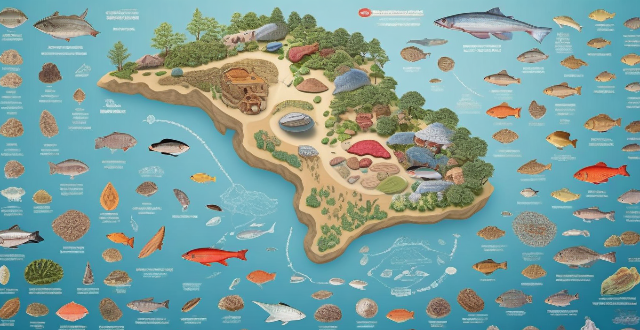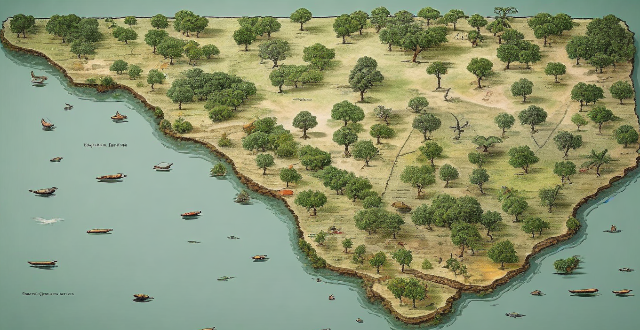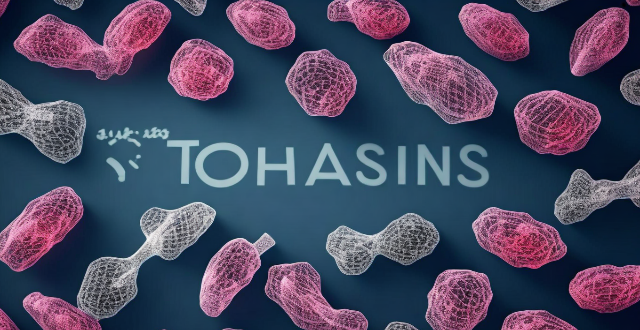War Genetic

What role does genetic sequencing play in virus origin tracing ?
Genetic sequencing is an essential tool for tracing the origin of viruses, particularly when it comes to identifying the source of outbreaks and understanding how they spread. By analyzing the DNA or RNA molecules present in a sample, researchers can determine its genetic makeup and compare it to known viral genomes to identify similarities and differences. This process has helped identify patterns that suggest common ancestry or recent transmission events, leading to better prevention and control measures. However, challenges such as data volume and accuracy still need to be addressed.

What is the significance of genetic diversity within biodiversity ?
Genetic diversity is a vital component of biodiversity, playing a crucial role in ecosystem health and stability. It enables species to adapt to environmental changes, resist diseases, contribute to ecosystem functioning, support food security, and provide medicinal plants. However, threats such as habitat loss, overexploitation, climate change, introduced species, and pollution pose significant risks to genetic diversity. Conservation efforts must prioritize the protection and restoration of genetic diversity to ensure the long-term survival of species and ecosystems.

How does exercise physiology explain the differences in fitness levels among individuals with different genetic backgrounds ?
Exercise physiology explores the interaction between genetic factors and environmental influences like exercise, nutrition, and sleep to explain variations in fitness levels among individuals. It examines how muscle fiber composition, cardiovascular efficiency, metabolic rate, and body composition affect one's ability to perform physical activities. While genetic background sets a baseline for fitness potential, lifestyle choices significantly impact an individual's actual fitness outcomes. By understanding these principles, individuals can optimize their fitness through targeted exercise training, proper nutrition, and adequate rest.

How does climate change affect biodiversity ?
This article explores how climate change affects biodiversity by altering ecosystems, species distribution, and genetic diversity. It discusses the impact of rising temperatures on habitat loss and altered precipitation patterns, ocean acidification on coral reefs and phytoplankton communities, and extreme weather events on fires and storms. The article also highlights the loss of genetic diversity due to reduced resilience and functional homogeneity in ecosystems, as well as inbreeding depression and genetic bottlenecks in species. Addressing climate change is essential for conserving biodiversity and maintaining healthy ecosystems.

What is the connection between biodiversity and food security ?
The connection between biodiversity and food security is crucial, as biodiversity contributes to crop pollination, natural pest control, soil health, and genetic resources for crop improvement. Loss of biodiversity can lead to reduced crop yields, increased use of pesticides, loss of genetic diversity, and economic impacts on farmers. Sustainable agriculture practices such as agroforestry, conservation agriculture, integrated pest management, and crop rotation/intercropping can help maintain biodiversity while ensuring food security.

What are the ethical implications of genetically modified organisms (GMOs) on the environment ?
The article discusses the ethical implications of genetically modified organisms (GMOs) on the environment, including their potential impact on biodiversity, risk of environmental disasters, and broader economic and social implications. It highlights concerns such as loss of native species due to competition for resources, genetic contamination, and habitat destruction; the potential spread of pests and diseases, ecosystem disruption, and genetic pollution; as well as issues related to monopolies and access to seeds, dependence on corporations, and loss of autonomy for farmers. The conclusion emphasizes the importance of considering these ethical considerations in decisions regarding the development and deployment of GMOs to prevent irreparable harm to ecosystems and communities.

What are the ethical considerations surrounding the use of technology in sports, such as performance-enhancing drugs or genetic testing ?
The use of technology in sports raises numerous ethical considerations, particularly when it comes to performance-enhancing drugs and genetic testing. These technological advancements can significantly impact fairness, integrity, and the very essence of athletic competition. In this discussion, we will explore the various ethical issues surrounding these technologies and their implications for sports. One of the primary ethical concerns with PEDs is the issue of fairness and equity. Athletes who use PEDs gain an unfair advantage over those who do not, as they can enhance their physical abilities beyond what is achievable through natural means. This undermines the fundamental principle of sports, which is to showcase one's talent and hard work through fair competition. Another ethical consideration is the potential health risks associated with PEDs. Many of these substances can have severe side effects and long-term consequences on athletes' health. The pressure to perform at the highest level can lead athletes to take unnecessary risks with their well-being, raising questions about the moral responsibility of sports organizations and governing bodies to protect their athletes. The use of PEDs also threatens the integrity of competition. If some athletes are using PEDs while others are not, it creates an uneven playing field that undermines the legitimacy of the sport and its outcomes. Additionally, the widespread use of PEDs could lead to a culture where cheating becomes normalized, further eroding the values and principles upon which sports are built. Genetic testing raises significant ethical concerns regarding privacy and consent. Athletes may be required to undergo genetic testing to determine their susceptibility to certain conditions or to identify potential performance advantages. However, this practice raises questions about whether athletes fully understand the implications of such testing and whether they are truly giving informed consent. Genetic testing also has the potential to lead to discrimination and stigmatization based on an athlete's genetic makeup. If certain genetic traits are deemed advantageous or disadvantageous, it could result in unfair treatment or exclusion from competition. This raises concerns about the potential misuse of genetic information and the need for strict regulations to prevent discrimination. Finally, genetic testing presents moral dilemmas related to the concept of "designer babies" and gene editing. If parents choose to select or modify their children's genes to give them a competitive edge in sports, it raises complex ethical questions about the role of nature versus nurture in athletic success and the potential consequences of creating a generation of genetically enhanced athletes. In conclusion, the use of technology in sports, particularly performance-enhancing drugs and genetic testing, raises numerous ethical considerations related to fairness, equity, health risks, integrity of competition, privacy, consent, discrimination, and moral dilemmas. As technology continues to advance, it is essential for sports organizations and governing bodies to address these ethical issues proactively and establish strict regulations to ensure the integrity and fairness of athletic competition.

Can studying historical outbreaks provide clues to modern virus origins ?
Studying historical outbreaks can provide valuable insights into the origins and behavior of modern viruses. By analyzing past pandemics, we can gain a better understanding of how viruses spread, evolve, and affect human populations. This knowledge can be used to develop better prevention and control strategies for future outbreaks, ultimately saving lives and improving global health outcomes.

How has environmental legislation evolved over time ?
Environmental legislation has evolved over time, reflecting growing awareness of environmental issues. Early stages focused on preserving natural resources and conserving wildlife habitats, while post-World War II saw a shift towards pollution control through air and water quality regulations. The late 20th century introduced comprehensive environmental protection laws addressing multiple aspects of environmental degradation. Today's legislation prioritizes sustainable development and climate change mitigation, with a focus on public participation and transparency in decision-making processes.

Is it possible for a virus to have multiple origins ?
Viruses are elusive entities with complex evolutionary histories, and understanding their origins is crucial for public health and disease control. While traditional theories suggest singular origins for viruses, evidence supports the possibility of multiple origins through processes like recombination, host switching, environmental influences, zoonotic events, genetic exchange with host cells, ancient viral lineages, and laboratory manipulation. Recognizing these complexities is essential for advancing scientific knowledge, improving public health outcomes, and enhancing our ability to respond to emerging infectious diseases.

How can we trace the origin of a virus ?
This article explores the methodologies and techniques used to trace the origins of viral outbreaks, using examples such as MERS-CoV, SARS-CoV-2, and other significant viruses. It discusses epidemiological investigations, genetic sequencing and analysis, ecological investigations, molecular clock analysis, and viral culture and isolation as key approaches in this process. By combining these methods, scientists can build a comprehensive picture of a virus's origins, which is vital for preventing future outbreaks and developing effective treatments and vaccines.

What are the latest trends in sports research and development ?
The latest trends in sports research and development include wearable technology for real-time monitoring, data analytics for performance evaluation, genetic testing for personalized training, VR and AR for skill development, recovery technologies like cryotherapy, and nutritional advances. These advancements focus on enhancing athletic performance while emphasizing athlete health and well-being.

How do ecological protection areas contribute to biodiversity conservation ?
Ecological protection areas contribute significantly to the conservation of biodiversity by preserving habitats, protecting endangered species, maintaining genetic diversity, mitigating climate change, and promoting education and awareness. These areas are crucial for the long-term survival of ecosystems and the diverse range of species that depend on them.

Why is man portable air defense missile the bane of low altitude and ultra-low altitude flying targets

What policies and international agreements aim to protect biodiversity ?
The text provides an overview of various policies and international agreements that aim to protect biodiversity, including the Convention on Biological Diversity (CBD), the United Nations Framework Convention on Climate Change (UNFCCC), the Ramsar Convention, the International Union for Conservation of Nature (IUCN), the World Wildlife Fund (WWF), the Nagoya Protocol, the Global Environment Facility (GEF), national policies and legislation, and the Great Ape Project. These initiatives are crucial for maintaining ecosystem health and human well-being, but face challenges in implementation and enforcement.

How can advancements in technology aid in more accurate virus origin tracing ?
The article discusses the role of technology in tracing virus origins, highlighting various techniques such as genomic sequencing, phylogenetic analysis, data mining, machine learning, satellite imagery, and remote sensing. These methods provide powerful tools for understanding how viruses evolve and spread over time, as well as identifying areas at risk for future outbreaks. The advancements in technology have revolutionized our ability to trace the origins of viruses, offering valuable insights into the ecological factors that contribute to virus emergence.